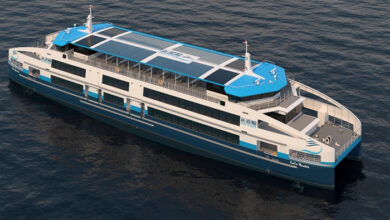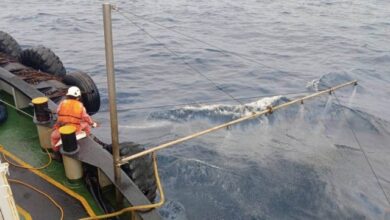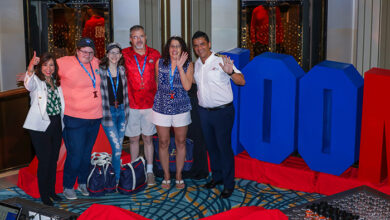
Unfortunately, there are certain pieces of equipment that need maintenance and repairs that require a sailor to go to the top of the mast.
Traditionally, and indeed some would say, still, the best way up is to put the designated sailor into a Bosun’s chair. This is then attached to a halyard and a suitably strong person or people, then haul the sailor up to the top.
Normally they would be assisted by a nearby winch, both to assist and to prevent the halyard from slipping from their grasp and the sailor from plummeting to the deck.
![]()
An acceptable system, if you have some burly crew members handy, but there are many occasions when this system is just not feasible. For example, if there were a family and the only person who could do the job aloft was also the only person who could provide the required muscle.
Or in the case of challenges like the Global Solo Challenge (GSC), when the sailors are sailing solo, then alternative methods of going aloft are required.
![]()
Now if the ladder is fixed, either with permanent or fold-down steps, then there are certain disadvantages.
The first is the cost, with these systems, even the most rudimentary folding step can easily cost €60 each and that is before fitting. A full permanent system would easily cost thousands.
These systems can also affect the structural integrity of the mast and the weight distribution of the boat and this has to be factored in
![]()
A second alternative would be a rope or webbing type ladder that is hauled up a halyard for the purpose.
These are notoriously difficult to climb, even in the smoothest of conditions (Murphy’s law says that such repair will never be required on quiet, smooth seas).
Climbing either type of ladder is physically strenuous, and if you have been sailing solo for a long period of time and are suffering a certain degree of sleep deprivation, then I am sure the last thing you would want to do is to climb a ‘moving’ ladder.
![]()
Some sailors have also tried to use a climbing harness but this system is not really suitable if you are going to spend much time aloft, as it squeezes the bottom and thighs and this can prove to be quite painful.
A more sensible alternative is from our friends at ATN (who are sponsoring the GSC). They manufacture the ‘ATN Mastclimber’.
In this system, a spare halyard is tied to an available deck cleat and through a system of proprietary ascender cleats, the sailor, who is in a Bosun’s Chair (which has an integral harness), then scales the Halyard using a stand-up, sit-down type of movement, using just their legs to climb.
The Mastclimber has a solid board seat and high backrest with leg straps to keep the butt on the board as the climber operates his ATN Mastclimber. This hanging type position means that the sailor would not have to hang on so dearly when the boat and indeed the mast is moving and prevents the danger of losing footing and falling.
Its design also means that it is relatively straightforward for the sailor up the mast to stand above the top of the mast and indeed to reach out to the end of the spreaders as required.
To see this great innovation in action go to:
https://atninc.com/atn-mastclimber-sailing-equipment.shtml
One last thing, I was going to ask Etienne at ATN if I could try this Mastclimber out, but sadly I am scared of heights. I then tried to persuade my good lady to give it a try, but her reply… well I never knew that she knew such language.













